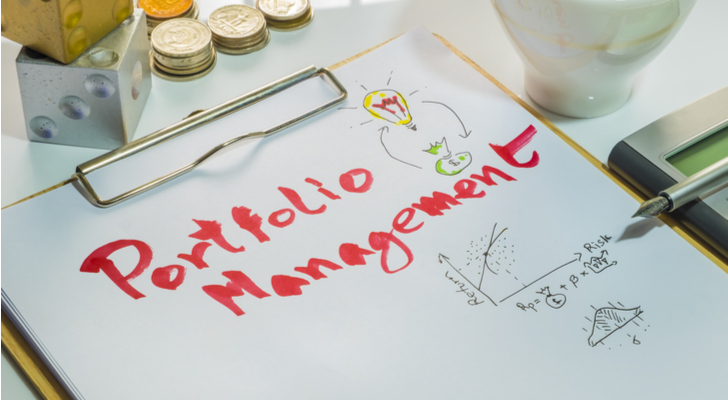Investors can easily create a stock and bond “set-and-forget-it,” diversified, lazy exchange-traded fund (ETF) portfolio — then kick back and relax. But what if you want more than just the typical stock and bond ETFs in your affordable investment portfolio? There’s a case to be made for traveling off the beaten ETF path. Consider adding alternative asset classes — commodities, sector bets, smart beta funds and more — without breaking the bank.
Needelman Asset Management in Ladera Ranch, California touts the benefits of broader diversification, including serving as an inflation hedge, potential higher returns and lower correlation with existing assets. And well-known investor Jim Rogers described several of his current global ETF holdings including China, Vietnam, Korea and Indonesia sector funds in a recent ETF.com interview by Sumit Roy.
For investors seeking greater diversification for affordable fees, here are several ETFs to consider:
1. Franklin Liberty U.S. Low Volatility ETF (FLLV)
Expense ratio: .50%
AUM: $12.41 M
Inception date: Sept. 20, 2016
If volatility is causing you headaches, then this low-volatility fund might be good medicine. The actively-managed ETF seeks capital appreciation with lower volatility than the Russell 1000 Index. The fund engages in a bottom-up stock selection strategy. Within sectors, holdings are equal weight, while the sectors are market-weighted in accord with the Russell 1000 index. Although touted as a U.S. fund, the charter allows up to 20% international holdings.
2. ARK Genomic Revolution Multi-Sector ETF (ARKG)
Expense ratio: .75%
AUM: $178.11 M
Inception date: Oct. 31, 2014
For investors seeking to profit from the popular genomics research sector, this actively managed fund fits the bill. Another actively managed ETF, ARKG doesn’t track the biotech benchmark but includes a hand-picked collection of genomic-related stocks. The fund’s top three sectors are biotech, healthcare and pharmaceuticals, with Intellia Therapeutics Inc (NASDAQ:NTLA) and Illumina, Inc. (NASDAQ:ILMN) holding 18% of the fund’s assets. Although, the .75% management fee is high for typical index fund ETFs, it compares favorably with its actively managed peers. ARKG is an example of one sector bet, although there are hundreds from which to choose. For sector picks, use your own judgement or industry experience to figure out which market segments might outperform.
3. Vanguard U.S. Value Factor ETF (VFVA)
Expense ratio: .13%
AUM: $23.62 M
Inception date: Feb. 13, 2018
This new, smart beta, actively managed ETF by index fund powerhouse Vanguard attempts to capture the historical outperformance of value stocks. The fund manager seeks undervalued stocks with long-term capital appreciation potential. The fund’s stock-picking rules consider price-to-book and earnings-to-price ratios. The potential holdings are culled from predominantly U.S. firms across size and sector groups. The top holdings include well-known names — Micron Technology, Inc. (NASDAQ:MU), Ford Motor Company (NYSE:F), PG&E Corporation (NYSE:PCG
), Morgan Stanley (NYSE:MS) and General Motors Company (NYSE: GM). The rock-bottom expense ratio and value orientation makes this smart beta fund a conservative addition to a diversified portfolio.
4. iShares Commodities Select Strategy ETF (COMT)
Expense ratio: .48%
AUM: $689.6 M
Inception date: Oct. 15, 2014
Commodity ETFs come in countless varieties, from single commodity such as gold or silver, to a diversified commodity fund such as COMT. This diverse commodity fund targets assorted size companies, with various commodity-related assets across North America. The actively managed commodity fund is geared for investors seeking broad commodity access. The fund doesn’t produce a K-1 tax form and strives to protect against inflation. The fund invests in commodity futures and producer stocks. The management fee is below the 0.77% category average.
5. SPDR S&P Emerging Asia Pacific ETF (GMF)
Expense ratio: .49%
AUM: $514.3 M
Inception date: March 27, 2003
This regional ETF gives investors exposure to the emerging Asia economies. If you want to follow in Rogers’ footsteps, and think this corner of the world will prosper, then this is a solid fund. China dominates the holdings but there’s also exposure to India, Malaysia, Thailand and the Philippines. With 250 stocks, you’ll gain broad diversified exposure to the region. Large market cap companies hold 84% of the assets with the remainder in mid and small caps.
There are hundreds of diverse strategy ETFs to round out a plain vanilla lazy portfolio. If you don’t want to wade through the entire ETF universe, you might consider using a robo-advisor with down-side risk protection.
In general, if you’re seeking to branch out from the standard ETFs, invest a small percentage of your investments in alternate assets. Then track your performance against the traditional diversified ETF portfolio to see how you fare. Either way, diversification will cushion your overall portfolio returns. And for the greatest portfolio diversification, keep some cash on the sidelines to invest in bargains after a market crash, as most valuations are frothy at present.
Barbara A. Friedberg, MBA, MS is a veteran portfolio manager, expert investor, and former university finance instructor. She is editor/author of Personal Finance; An Encyclopedia of Modern Money Management and two additional money books. She is CEO of Robo-Advisor Pros.com, a robo-advisor review and information website. Additionally, Friedberg is publisher of the well-regarded investment website Barbara Friedberg Personal Finance.com. Follow her on twitter @barbfriedberg and @roboadvisorpros. As of this writing, she does not own shares in any of the above ETFs.

